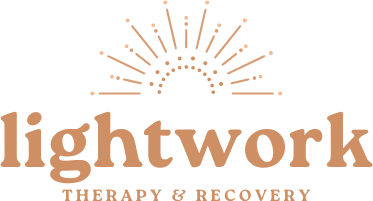In the dynamic landscape of the modern workplace, the creation of inclusive wellness programs has emerged as a cornerstone for promoting a healthy, engaging, and productive environment. The influence of female leadership in crafting and implementing these programs is increasingly recognized for its profound impact. Women leaders, with their unique perspectives and empathetic approaches, are at the forefront of this revolution, advocating for wellness initiatives that acknowledge and address the varied needs of every employee.
At LightWork Therapy & Recovery, we understand the critical importance of fostering environments that support mental, emotional, and physical health. We believe in the power of comprehensive wellness strategies developed through the lens of inclusivity and empathy – values often exemplified by female leadership. Our commitment extends beyond traditional wellness approaches, as we aim to create spaces where every individual feels understood, valued, and empowered.
In this article, we explore the transformative role female leaders play in enhancing workplace wellness. We delve into how their leadership styles contribute to the development of programs that not only benefit the individual but also promote a culture of well-being throughout the organization. Join us as we uncover the importance of inclusive wellness programs and the indispensable role of female leadership in this vital aspect of workplace culture.
The Importance of Inclusivity in Workplace Wellness:
The concept of inclusivity extends far beyond the realms of race, gender, and culture; in the context of workplace wellness, it encapsulates the idea of creating programs that are accessible and beneficial to all employees, regardless of their unique backgrounds or life circumstances. Inclusive wellness programs are designed to cater to the diverse needs of an organization’s workforce, acknowledging that each employee’s health and well-being journey is distinct.
Inclusivity in wellness means understanding that a one-size-fits-all approach is insufficient and often ineffective. It requires a deep dive into the demographic, psychological, and physical diversity present within a company and crafting initiatives that address this variety. From mental health support and fitness programs to nutritional guidance and stress management, inclusive wellness programs consider the holistic needs of the workforce.
Such programs are not merely perks or benefits; they are a reflection of an organization’s values and a commitment to its most valuable asset—its people. By prioritizing inclusivity in wellness, companies send a powerful message: every employee’s health and well-being matter. This approach not only enhances individual health outcomes but also fosters a sense of belonging and community within the workplace.
The role of female leadership in advocating for and implementing these inclusive programs cannot be understated. Women leaders, often bringing their own experiences of exclusion or marginalization, understand the significance of representation and empathy in wellness initiatives. Their perspectives can lead to more nuanced, compassionate, and effective wellness programs that resonate with a broader section of the workforce.
As we delve deeper into the facets of inclusive workplace wellness, we’ll explore how companies can move beyond traditional models to embrace more holistic and diverse approaches.
Female Leadership: Pioneering Change in Wellness Programs
Female leaders are increasingly recognized for their distinctive approach to leadership, which often includes higher levels of empathy, inclusiveness, and a holistic view of health and well-being. These traits are particularly beneficial in the context of workplace wellness programs, where understanding and addressing the diverse needs of employees is crucial for success.
Empathy allows female leaders to connect with employees on a deeper level, understanding their unique situations and challenges. This connection fosters trust and encourages more employees to participate in wellness initiatives, knowing their needs and concerns are genuinely considered. Inclusiveness ensures that wellness programs cater to a broad spectrum of employees, recognizing and celebrating diversity within the workforce. By ensuring that everyone feels included, female leaders can create programs that support a wider range of health and wellness goals, from physical fitness to mental health support.
A holistic approach to health means understanding that employee well-being extends beyond physical health. Female leaders often champion programs that address mental, emotional, and social well-being, acknowledging that all these elements are interconnected and essential for overall health. This comprehensive view leads to more effective wellness initiatives that can significantly improve employees’ quality of life both inside and outside the workplace.
The qualities brought by female leadership can transform workplace wellness programs, making them more inclusive, empathetic, and holistic. As companies increasingly recognize the value of diverse leadership styles, the impact of female leaders in creating and sustaining effective wellness programs is more apparent than ever. Learn more about our leadership.
Case Studies: Successful Wellness Programs Led by Women
Across various industries, female-led wellness initiatives are making a profound impact. By examining real-world case studies, we can gain insights into the strategies employed by female leaders, the obstacles they’ve navigated, and the positive outcomes they’ve achieved.
One notable example is a tech company where a female HR director revamped the wellness program to include mental health days, mindfulness sessions, and workshops on work-life balance. The initiative, focused on mental and emotional well-being, led to a significant decrease in reported stress levels and a noticeable improvement in employee engagement and productivity.
Another case study comes from the healthcare sector, where a female CEO implemented a comprehensive wellness program that included health screenings, fitness challenges, and nutrition counseling. By addressing the physical health of her employees, she not only improved their well-being but also enhanced patient care, demonstrating the ripple effect of effective wellness programs.
These case studies validate the crucial role of female leadership in developing successful wellness initiatives. The challenges overcome—such as budget constraints, cultural resistance, and logistical hurdles—highlight the resilience and innovation of female leaders. The positive outcomes, including improved employee well-being, reduced absenteeism, and higher job satisfaction, underscore the tangible benefits of well-crafted wellness programs led by women.
By examining these real-life examples, we can draw inspiration and learn valuable lessons that apply to our own workplaces. Female leaders in wellness demonstrate that with empathy, inclusiveness, and a holistic approach, it’s possible to create programs that truly make a difference in employees’ lives. Read more about successful wellness programs on our blog.
Strategies for Implementing Inclusive Wellness Programs
Creating an inclusive wellness program requires thoughtful planning and commitment. Under the guidance of empathetic and insightful female leadership, organizations can adopt the following strategies:
- Conduct Employee Surveys: Understand employee needs by conducting surveys or focus groups. This direct feedback can guide the development of programs that address the specific health concerns and interests of your workforce.
- Foster a Culture of Health: Create an environment where wellness is part of the company’s ethos. This can be achieved by integrating health and wellness into company policies, providing incentives for participation, and celebrating successes.
- Ensure Accessibility and Diversity: Make sure wellness programs are accessible to all employees, regardless of their physical abilities, cultural backgrounds, or work schedules. Offering a range of activities can cater to diverse preferences and needs.
- Provide Continuous Education: Educate employees about the importance of mental and physical health. Regular workshops, seminars, or newsletters can keep wellness at the forefront of their minds.
- Support Mental Health: Incorporate mental health resources and support into wellness programs, such as counseling services, stress management courses, and mental health days.
By implementing these strategies, organizations can develop wellness programs that truly resonate with their employees, fostering a healthier, more inclusive workplace.
The impact of female leadership in crafting and championing inclusive workplace wellness programs cannot be overstated. Women leaders, with their unique perspectives and inherent empathy, are ideally positioned to drive initiatives that cater to the diverse needs of the workforce, promoting environments where every employee has the opportunity to thrive.
The benefits of such inclusive wellness programs extend far beyond individual health improvements. They foster a culture of care and respect, improve employee engagement and satisfaction, and enhance overall productivity. By investing in holistic wellness initiatives that reflect the real needs of their workforce, businesses can reap substantial rewards.
As we move forward, it’s imperative for organizations to embrace diverse leadership styles and commit to creating wellness programs that prioritize inclusivity and accessibility. The insights and approaches brought by female leaders can lead the way in transforming workplace environments into spaces where wellness and well-being are integral to the organization’s success.
We encourage businesses to take proactive steps toward this transformation. Embrace the principles of inclusivity, listen to your employees, and invest in their holistic well-being. The path to a healthier, more productive workforce is through comprehensive, empathetic wellness initiatives.
Reflect on the current state of your organization’s wellness initiatives. Are they inclusive? Do they address the diverse needs of your workforce? Consider the role that inclusivity and female leadership can play in enhancing the health and well-being of your workplace.
At LightWork Therapy & Recovery, we are dedicated to supporting organizations in developing comprehensive, inclusive wellness programs that cater to the diverse needs of their employees. Reach out to us for guidance, resources, and support in creating a wellness program that makes a real difference. Together, we can foster healthier, more inclusive workplaces. Contact us to get started.
External Resources:
- Harvard Business Review – “The Business Case for Wellness Programs” – Offers insights into the benefits and ROI of workplace wellness programs.
- Centers for Disease Control and Prevention (CDC) – Workplace Health Promotion – Provides guidelines and resources for implementing effective workplace health programs.
- Lean In – “Women in the Workplace 2021” – Presents research and data on the challenges women face in corporate environments and the impact of female leadership.





